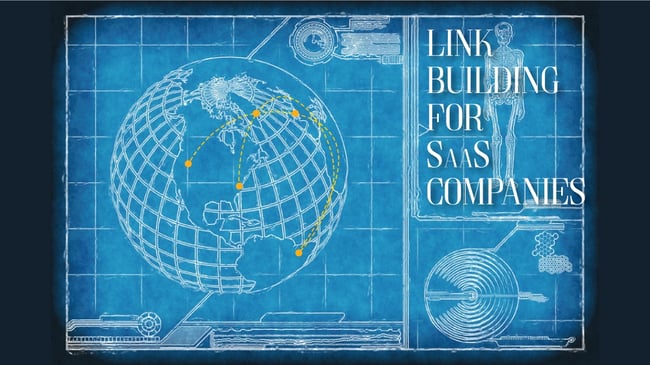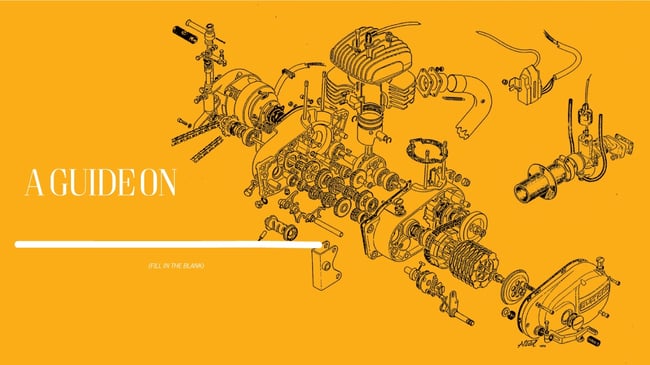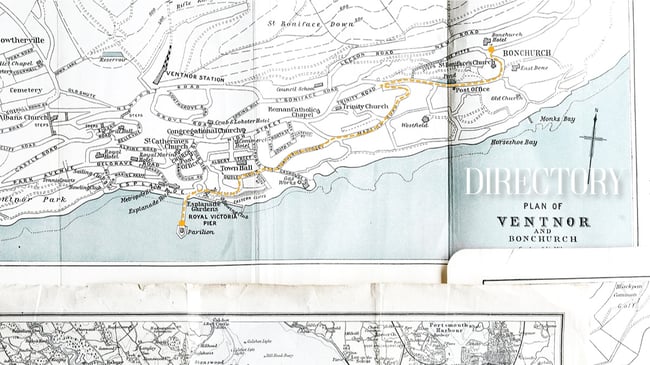As a SaaS company, you’re likely used to a fast-paced, adaptive market. Link building is similarly ever-changing as search engines continue to evolve and become more sophisticated.
Securing links for a SaaS website is distinctively challenging and you’ll hit a wall quickly without the right strategy. At Page One Power, we’ve worked with dozens of businesses with the SaaS model, honing a link building process that caters to the unique opportunities available in the space.

The first part of our process involves identifying if your business is B2B or B2C, as they each have their own sets of challenges. For example, B2B SaaS companies:
- Serve a smaller, more narrow audience.
- Convert less overall, but conversions are highly valuable.
- Typically create content aimed at the middle-to-lower end of the funnel.
Whereas B2C SaaS businesses:
- Cater to larger audience pools.
- Face more competition.
- Create content that targets the top of the funnel.
And both types of SaaS models are subject to seasonality considerations — tax season for accounting software, the school year starting for educational software, summer for travel software, etc.
Identifying your business model and the associated challenges helps us decide which link building strategy — and subsequent tactics — will produce the best results. Today I’ll walk through some of the various methods we use to acquire worthwhile links for clients in the SaaS niche.
Our primary tactics for SaaS link building are:
- Mention link building
- Linkable asset promotion
- Content link building
- And niche directory placement.
Let’s dive in!
Mention Link Building
Our most fruitful tactic for SaaS link acquisition is pursuing unlinked mentions. Mention link building can have varying levels of success from industry to industry, but we’ve found it can be particularly effective for SaaS companies.
Typically, mention link building is best-suited for established, well-known brands. These brands are recognizable, receive media coverage, and tend to be talked about online more frequently. Of course, big name SaaS companies will have these opportunities, but there is another unique way to generate online mentions that is available to all SaaS brands — including small or new companies.

Developing, highlighting, and sharing integrations with other software leads to relevant online mentions. Our work in the SaaS space has taught us that one of the primary ways other sites mention SaaS clients is explaining how their software integrates with other tools and software.
As a SaaS company, you can cultivate these mentions by actively working with other brands to develop integrations that benefit both of your services. As you build these relationships, other sites that use both services will talk about how your software integrates with the other, leading to mention link building opportunities.
To go beyond mentions, you can actively work with other sites to help them produce content that demonstrates how your software integrates with other popular platforms. This strategy builds brand awareness, develops positive relationships within your industry, and nets valuable backlinks.
Linkable Asset Promotion
Linkable asset promotion is a tactic that can be applied across virtually any industry, but there are specific assets that work particularly well in the SaaS niche.
One of the best linkable assets a SaaS business can offer is a free or “freemium” version of their software. People are eager to link to these pages because they offer tremendous value — the ability to test your software for free — to their audiences.
If you don’t currently offer a free or freemium version of your software, you should consider developing one, as we’ve seen these pages effectively and sustainably drive relevant links. Of course, you need to offer a usable version of your software. We’ve had clients who wanted to promote a “Free 10 Day Trial” page and these efforts were unsuccessful because these short trial versions aren’t very appealing.
Another option for a link-worthy asset is tool creation.
The key to creating a tool that is linkable is to build something that serves the top of your funnel. Too often we see clients develop a tool, but its functionality is dependent on their proprietary software. This limits the audience for the tool and renders it much less link-worthy.

Guides, how-to’s, whitepapers, and other educational material can be leveraged as linkable assets as well. These types of pages serve value by providing information and can be promoted for backlinks from relevant sites.
One common misstep we see from SaaS companies is when they hide these resources behind a subscription paywall, because lead generation is so important for a SaaS business. If you want to leverage these assets for links, you need to resist the temptation to gate them.
However, if you’re set on using these resources for lead generation, another option is to repurpose them into a new format on a different page on your site that isn’t gated. For example, you could distill the key takeaways from a white paper into an appealing and shareable infographic.
Content Link Building
Securing links through content is typically an option for any niche, and SaaS is no different.
Like other niches, content link building for SaaS requires the ability to create worthwhile, value-driven content and useful, informative pages to cite.
A common issue among SaaS clients is they’re so focused on lead generation, they neglect the top of the funnel and only produce middle-to-bottom of the funnel content. The problem here is nobody wants to link to middle or bottom of the funnel content.

To manage the tension between creating content that feeds your sales funnel and crafting linkable content, you should think about people in the discovery phase of your product. These are people who aren’t aware of your brand or solution, but could benefit from your software. Targeting these people with content serves two functions: increasing brand awareness and tapping into linkable topics.
Want to learn how we used these tactics to help grow a SaaS brand's total annual revenue by 40%? Fill out the form below to receive our case study!
A critical portion of an effective content link building strategy is internal linking. Internal links guide readers down your sales funnel and direct link equity to converting pages on your site using top funnel content, which has a semantically broader reach than most mid-to-bottom funnel content.
Niche Directory Placement
Finally, niche directories are a viable link building channel for SaaS businesses.
If you’re thinking, “Wait, aren’t directories spammy or worthless in terms of SEO?” — well, you’re mostly right. However, we’ve found there are typically a few hyper-relevant, niche directories in our SaaS clients’ spaces that are worth securing links on.

The important thing to note here is that these are a few niche directories — the prospect pool is usually very small, so prioritizing directory placement as a strategy is not sustainable. However, the directory prospects that are available are typically hyper-relevant, regularly maintained, and authoritative within their respective niches. These are quality prospects worth pursuing and often lead to handful of powerful, relevant links.
Along with relevance, the other primary factor you should consider when vetting these potential directories is whether people visit and use the directory. A tool like SEMrush can be helpful for measuring traffic to the site.
Don’t overlook directories, but only focus on niche-specific prospects and don’t expect to successfully prioritize this tactic in your long-term strategy.
Conclusion
Link building in the SaaS world brings its own set of challenges and opportunities, and our experience in the space has helped us perfect the necessary processes to overcome these challenges and take full advantage of the opportunities.
If you’re a SaaS business, you should consider the following link building tactics:
- Mention link building.
- Linkable asset promotion.
- Content link building.
- Niche directory placement.
If you’re interested in growing organic search as channel, but don’t have the time to manage a dedicated link building campaign, please reach out to one of our SEO Consultants to learn more about our custom link campaigns.

